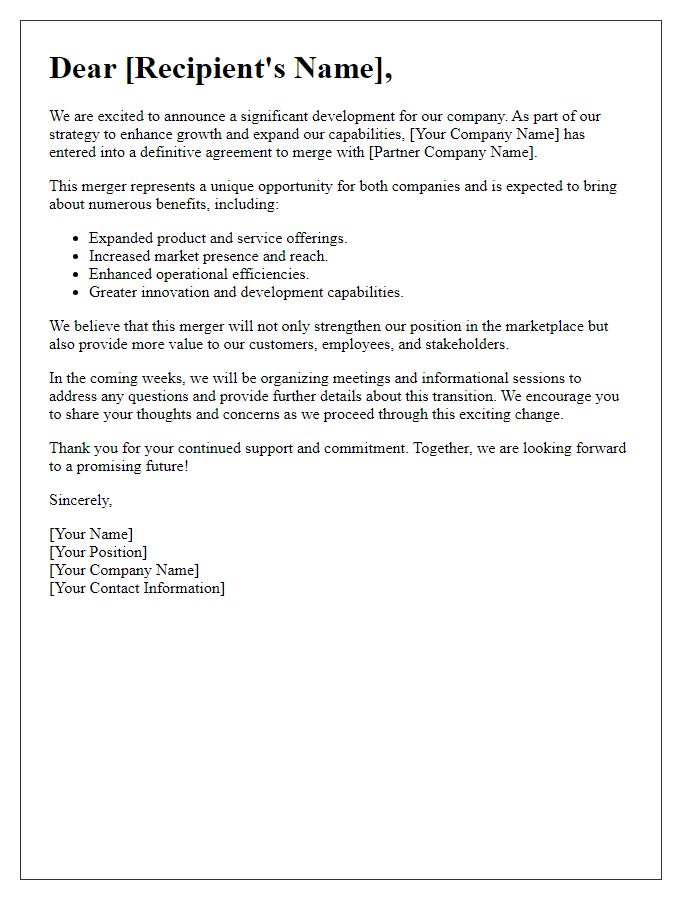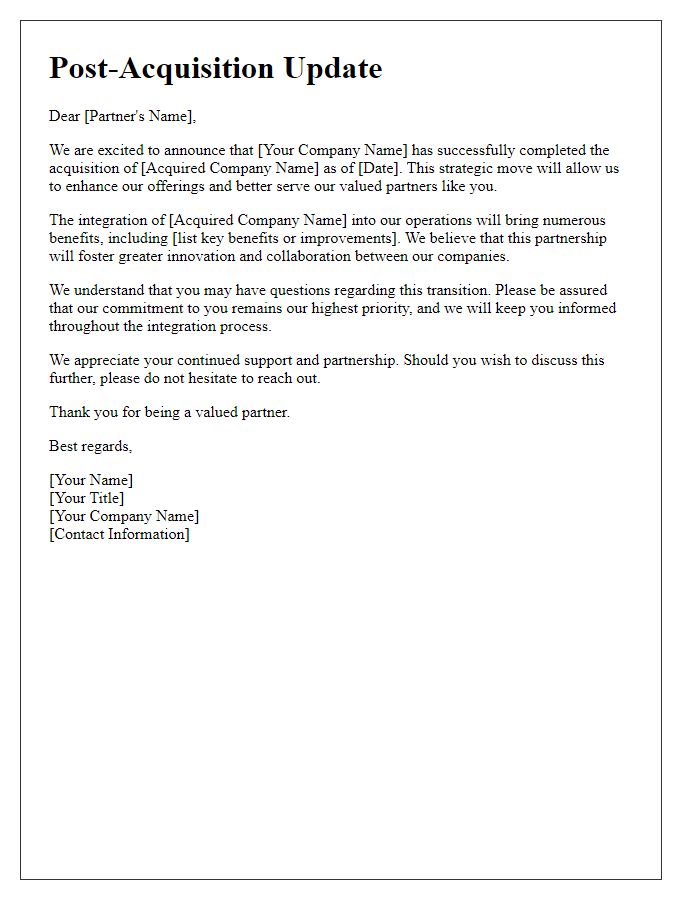Are you looking to efficiently communicate your acquisition plans? Crafting a well-structured letter can be a powerful tool to ensure clarity and foster trust among stakeholders. With the right approach, you can convey essential information while addressing concerns and highlighting potential benefits. Dive into this article to explore a comprehensive letter template that will help you navigate the complexities of acquisition communications with ease!

Key Stakeholder Identification
Key stakeholder identification is crucial in the acquisition communication plan. This process involves recognizing individuals or groups influential in decision-making, resource allocation, and implementation success. Stakeholders may include executive management (C-suite) responsible for strategic direction, department heads overseeing specific operational areas, and team members directly impacted by the acquisition. Additionally, external stakeholders such as investors, regulatory bodies, and clients play significant roles. Engagement strategies should address each stakeholder's concerns and information needs, ensuring timely and transparent communication throughout the acquisition process. Identifying stakeholders by their influence, interest level, and potential impact on the acquisition enhances overall buy-in and minimizes resistance.
Clear Communication Objectives
Establishing clear communication objectives during an acquisition is crucial for maintaining stakeholder trust and ensuring seamless integration. Identifying primary goals, such as conveying the strategic vision behind the acquisition (such as market expansion or product diversification), helps create a focused message. Moreover, detailing the timeline for implementation, expected outcomes, and benefits for employees, customers, and investors fosters transparency. Incorporating feedback mechanisms allows stakeholders to voice concerns or inquiries, ensuring their voices are heard. Furthermore, specifying the channels of communication, such as email updates, town hall meetings, or intranet announcements, enhances accessibility and engagement among all parties involved in the acquisition process.
Message Consistency
A well-defined acquisition communication plan ensures message consistency, reinforcing key themes and objectives across various stakeholders. The strategic framework involves outlining critical messages regarding brand integration, employee roles, and customer support initiatives. Target audiences, including employees, customers, and shareholders, necessitate tailored messages to address their unique concerns and expectations. Communication channels, such as email updates, town hall meetings, and social media platforms, must deliver cohesive information, ensuring that all parties receive the same narrative regarding the acquisition's benefits and goals. Regular feedback loops and adjustments based on stakeholder input will maintain alignment, fostering trust and clarity throughout the transition process.
Multichannel Strategy
An effective multichannel strategy for acquisition communications involves various platforms designed to engage potential customers through targeted messages and brand touchpoints. Social media channels like Facebook and Instagram serve to illustrate promotional campaigns, while email marketing offers personalized outreach based on user demographics. Content marketing through blogs and videos on platforms such as YouTube provides valuable information, enhancing brand credibility. Paid advertising on search engines, particularly Google Ads, targets specific keywords related to products or services, driving traffic to landing pages. Additionally, customer relationship management (CRM) systems enable tracking of interactions across channels, allowing businesses to refine their messaging and improve engagement. Integrating these channels ensures consistent communication that resonates with diverse audiences, ultimately driving acquisition goals.
Feedback Mechanism
The implementation of a feedback mechanism plays a crucial role in enhancing communication during the acquisition process. Utilizing multiple channels, such as surveys, suggestion boxes, and dedicated email addresses, allows employees to share their thoughts on the integration of organizations. Regularly scheduled feedback sessions, particularly in the post-acquisition phase, encourage open dialogue and address concerns related to cultural shifts or operational changes. Metrics such as response rates and sentiment analysis can be tracked to gauge employee engagement and satisfaction levels throughout the transition. Additionally, establishing a feedback review team ensures that insights are systematically analyzed and utilized to inform decision-making, fostering a culture of transparency and continuous improvement.













Comments